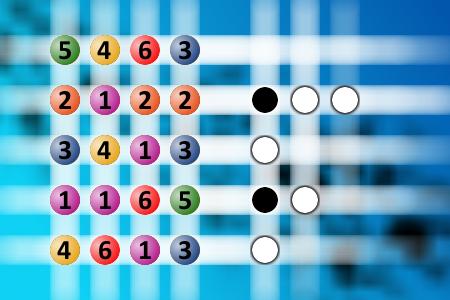Which is a winning combination of digits?
The computer chose a secret code (sequence of 4 digits from 1 to 6). Your goal is to find that code. Black circles indicate the number of hits on the right spot. White circles indicate the number of hits on the wrong spot.Correct answers: 26
The first user who solved this task is Nasrin 24 T.
#brainteasers #mastermind

Coma
A devoted wife had spent her lifetime taking care of her husband. Now he had been slipping in and out of a coma for several months, yet she stayed by his bedside every single day.
When he came to senses, he motioned for her to come near him.
As she sat by him, he said, "You know what? You have been with me all through the bad times. When I got fired, you were there to support me. When my business failed, you were there. When I got shot, you were by my side. When we lost the house, you gave me support. When my health started failing, you were still by my side. You know what?"
"What dear?" she asks gently.
"I think you bring me bad luck."

